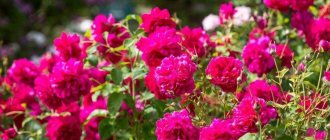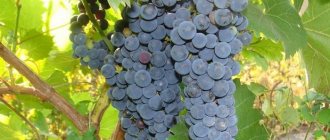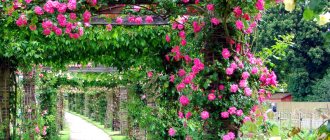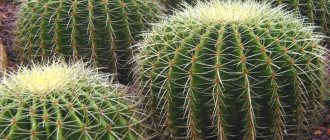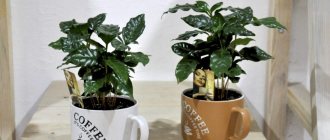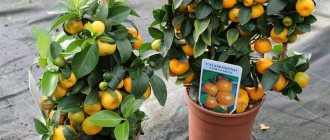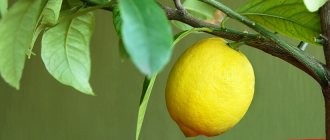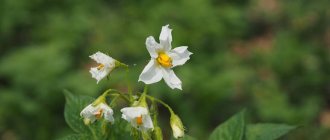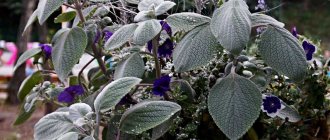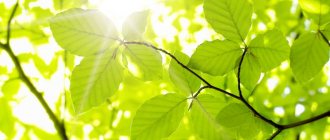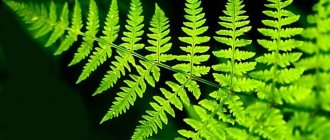The autumn garden leaves no one indifferent. Before the onset of cold weather, trees and shrubs play with bright colors not only thanks to multi-colored leaves. Some crops have no less attractive fruits, with which the branches are densely strewn.
Most trees and shrubs bear fruit in early autumn, but some crops retain bright berries until winter. We have prepared for you a selection of the most attractive plants that are ideal as autumn garden decor.
Barberry
Among the barberries there are deciduous, evergreen and semi-evergreen plants. Common barberries, Ottawa barberries, Siberian barberries, Amur barberries and Thunberg barberries are especially popular in the autumn garden. They have decorative leaves, flowers and fruits. In autumn, the bright red berries of barberry look great against the background of yellow, orange, red, green leaves of this ornamental plant. Often the fruits remain on the branches even in winter.
- 10 varieties of barberry that will decorate your garden
Bright, prickly, with delicious berries - all this is barberry! Which variety will decorate your garden and delight you all season long?
By planting barberry bushes, you can create beautiful hedges. The plant also looks great in the autumn garden as a bright tapeworm on the lawn.
Euonymus
Euonymus does not require formative pruning, so it is ideal for beginner gardeners. This undemanding plant does not particularly stand out in the summer, but in the fall it changes into a bright outfit in shades of pink, red and purple. In addition, beautiful autumn leaves complement the unusually shaped fruits.
- Euonymus Fortune
The most elegant and very frost-resistant euonymus, which decorates the garden all year round thanks to its variegated leaves.
- European Euonymus Red Cascade
One of the best autumn-winter decorations for your garden.
Hawthorn
These small trees or tall shrubs delight gardeners with edible fruits in the fall. Depending on the variety, they are yellow, whitish, orange, brown, purple, black, but the most common are bright red. They are shaped like small apples. The fruits remain on the plant until birds peck them.
Hawthorn is most often used in landscape design as a hedge; single trees also look good in the garden.
- Creating a hawthorn hedge
Basic rules for creating a hawthorn hedge.
Stone fruits or drupes
Another variety of fruit-bearing plants, which are classified as berries. Their difference is that they have a particularly strong peel and, as a rule, only one seed inside.
Chokeberry (Aronia melanocarpa)
A tall shrub or tree grown for the consumption of fruits rich in vitamin C and with pronounced antioxidant properties. In the Russian version it appears as chokeberry (although it is not related to the common rowan).
Aronia berries are small balls with a distinct sweet and sour flavor and astringent properties.
Belongs to the Pink family.
Acai (Euterpe oleracea)
One of the central and largest agricultural crops in Brazil and its neighboring countries. It bears fruit with small black berries, which are eaten raw or in cocktails, drinks, and national dishes. The core of the trunk is also edible.
INTERESTING. The Indians of the Amazon primarily ate Acai fruits (up to 42% of the total diet). Due to industrial berry picking, the indigenous population lost most of their traditional food and were forced to change their habits.
Acai reaches up to 20 meters in height, grows mainly along river banks and belongs to the Palm family.
Barbados cherry (Malpighia emarginata)
Trees grown in tropical climates. In the wild it is found mainly in the Caribbean. Local residents prepare drinks from the berries, replacing classic orange juices and fresh juices with them. It is known that Barbados cherries contain 65 times more vitamin C than oranges!
The plant belongs to the Malpighian family.
Goji (Lycium barbarum)
Goji berries are also popularly known as wolfberries, although it is known for certain that this is a collective and unscientific term, erroneously applied to some other wild fruits, not necessarily Wolfberry. Dereza in the form of shrubs or trees grows from China to Western Europe. It is found throughout most of Russia, often in the wild.
It is not consumed as food, but is known as a remedy with pronounced medicinal qualities.
It belongs to the Solanaceae family.
Serviceberry (Amelanchier canadensis)
Deciduous shrubs or small trees (no more than 1 m in height) that bear fruit with berries that darken to purple as they ripen.
It is used by humans for decorative purposes. In the wild, it often serves as an indispensable source of food for most bird species.
It is a member of the Pink family.
Viburnum and Viburnum (Viburnum lantana)
Large deciduous shrubs, which are also popularly called black viburnum, proud. By the end of summer, the fruits begin to ripen - black berries. Interestingly, as they ripen, they change color from green to red and then black.
Humans use Viburnum gordovina to decorate parks and gardens. In some cases, the berries are used to make ink or natural dyes.
Like the common viburnum, it belongs to the Adoxaceae family.
Carcass Tree (Celtis australis)
Large trees that begin to bloom at the same time as the leaves bloom. The first fruiting is typical only for 10-20 year old representatives of these plants.
The berries are a dark brown or black drupe. The fruit has somewhat dry but sweet pulp. It can be eaten, although it is generally not cultivated by humans and grows in the wild.
Representative of the Hemp family.
Persimmon (Diospyros)
It may seem surprising, but persimmons also bear fruit with fleshy berries rich in vitamin C (up to 55% of the daily intake in one fruit). In addition, these shrubs and trees are valuable to humans in terms of timber. Some varieties are the source of rare species of so-called ebony.
Persimmon grows mainly in the warm countries of the Asian continent and, probably, it was from there that it spread to other parts of the planet.
Belongs to the Ebony family.
Bird cherry
Low trees and shrubs growing from the south to the northern regions of Eurasia. It is used by humans everywhere: in perfumery, medicine, woodworking, food, and as a decorative decoration. Bird cherry bears fruit in small black drupes, which are also used in cooking as a natural, permanent dye.
It is a member of the Pink family.
Emleria
These shrubs or trees grow in North America, in its western part. Mature plants can reach 7 meters in height.
The formed fruits are pronounced drupes of a dark blue color (at the moment of maturity). They are harmless to humans, but are practically not used as food due to their bitter taste.
Represents the Pink family.
Elder
In May-June, elderberry decorates the garden with numerous inflorescences, and at the end of August, fruits form in place of the flowers. The red elderberry, as you might guess, is red, the black elderberry is blackish-purple, and the Canadian elderberry is dark purple. Red fruits fit more organically into the autumn garden palette, but they are inedible, unlike dark berries.
- Black elderberry Black Tower
A column-like tall shrub with fragrant inflorescences and bright berries, from which you just can’t take your eyes off all season.
Elderberry of any type and variety is good both as a “soloist” and as a participant in an attractive composition in the vicinity of other ornamental shrubs.
Classification of berries
According to the main classification, berries are divided into:
- real, or regular - they are characterized by a dense peel and 1-5 seeds inside;
- stone fruits - have a hard skin and grow from an ovary with a single seed surrounded by a woody layer;
- false - their pulp is formed not from the ovary, but from another part of the fruit;
- berry-shaped, or compound, are plants with several berries growing on one stalk;
- poisonous - berries, the consumption of which can harm human health.
Berries classification scheme
Fruits are also divided into wild and cultivated berries, edible and inedible, including based on shape, color, ripening time and other factors.
Derain
Derain bears fruit with small white berries in August-September, but this plant also has decorative bright leaves and shoots in the fall. Thanks to the fiery stems (especially in young specimens), both white and red turf remain attractive throughout the winter.
- Derain red
A bright deciduous shrub with a spreading crown and shoots of various colors - from light green (spring) to blood red (autumn).
- Derain white
A common ornamental shrub with attractive leaves and bright shoots.
Derain looks best in hedges or planted in small groups. The shrub tolerates pruning well, practically does not get sick and is not susceptible to attack by pests, so it is suitable for inexperienced and lazy gardeners.
Kalina
In spring, viburnum delights the eye thanks to its large snow-white inflorescences, and in autumn the shrub fascinates with its bright leaves and red berries. By the way, there are species with pink, orange, black, and bluish-blue fruits, but they are not popular in our latitudes. In the middle zone, viburnum is most often grown. The tasty and healthy bright red berries of this plant ripen in August-September. However, the fruits are harvested only after the first frost, then their taste becomes less tart and not so bitter.
- Decorative viburnum - the best varieties, tips for planting, care and pruning
Everything you wanted to know about decorative viburnum and one of its species - folded viburnum.
- Viburnum Buldenezh - photo, description, planting, care and reproduction
Everything you wanted to know about growing ornamental viburnum Buldenezh.
Viburnum is planted as a tapeworm and in groups with other flowering and ornamental deciduous shrubs. It is also good for creating hedges.
Edible wild berries
In the forests of Russia there are a huge variety of berries suitable for consumption. They are very useful due to the content of macro-, microelements and vitamins. Collection begins from June until late autumn, until the first snow falls.
Wild strawberry
Strawberries grow in the European part of the country, Western and Eastern Siberia, the Caucasus and Central Asia. The height reaches 15 cm. On a short stem, elongated red fruits hang almost to the ground. The leaves are trifoliate, dark green.
Wild strawberry is a wild berry that grows in clearings and forest edges.
It blooms from May to July with white inflorescences. The collection season begins at the end of June.
Strawberries contain a lot of sugar, organic acids and fiber, iron salts, phosphorus, calcium, B vitamins, carotene, ascorbic and folic acid. Eating fresh berries helps normalize digestion and eliminate inflammatory and ulcerative processes. It is used for diseases of the genitourinary system, cholelithiasis, diabetes, and diseases of the digestive system.
Wild raspberry
Raspberries grow in forests and clearings. A thorny shrub up to 2.5 m in height bears fruit in early August. The berries are bright red in color and have a sweet or sour taste, which varies depending on how much sun the bush has received.
In addition to its rich aroma, raspberries are rich in healing properties: not only the fruits, but also the stems, leaves and roots can be used. Most often it is used for colds or skin inflammations.
Wild raspberry is a berry with excellent taste.
Blueberry
Also known as chernega, chernets or blueberry. It grows in the northern and middle parts of the country, in the Caucasus and throughout Siberia.
It is a low-growing shrub up to 30 cm in height with ovate, pointed light green leaves. The black, blue-tinged berry has the shape of a ball no larger than a pea. Blueberries bloom in May and June, and harvesting begins in July and August.
Blueberries are a sweet wild berry that has not only a pleasant taste, but also beneficial properties.
The fruits contain organic acids, sugar, carotene, vitamin C and group B. They help improve vision, strengthen capillaries and reduce blood sugar. The main beneficial property of blueberries is considered to be the presence of many antioxidants that help prevent cancer.
Edible honeysuckle
Edible honeysuckle is an erect or creeping shrub with entire leaves. There are more than 100 species, but only 14 of them grow in central Russia.
Honeysuckle is a shrub with edible fruits that have juicy taste and medicinal properties.
White, pinkish, yellowish or blue large flowers are located at the ends of the branches. The emerging berries are grouped in pairs, sometimes merging with each other.
Flowering occurs from late May to mid-June.
Mountain ash
Rowan has large leaves and many white flowers. The spherical berries are bright red in color with small seeds. Rowan berries are harvested from late October to early November.
Rowan contains a large amount of ascorbic acid and carotene. In addition, it is rich in fat-soluble vitamins P, A, E, K, PP and B. It is known for its huge content of flavonoids and free amino acids.
It has a choleretic and laxative effect, reduces cholesterol levels in the blood and has a general strengthening effect on the whole body. A large amount of iodine will help in the treatment of thyroid diseases.
Common mountain ash is one of the most common trees in coniferous and mixed forests.
Rowan chokeberry
Chokeberry, or chokeberry, is a shrub or tree up to 1.5 m. It is found in forests and swamps, on dry and rocky soil. The sweet, tart berries are harvested in the fall.
The fruit contains potassium, phosphorus, calcium, magnesium, sodium, vitamins C, B3, B2 and A. All this contributes to the treatment and prevention of hypertension and atherosclerosis, gastritis and high cholesterol. Pectin substances help remove heavy metals and radioactive substances from the body.
According to recent studies, eating rowan improves liver function, strengthens the immune system and stabilizes the endocrine system.
Chokeberry is a medicinal shrub whose berries have good nutritional qualities.
Buckthorn
The shrub or tree grows up to 3-4.5 m and is found throughout the country. From small greenish flowers appear black drupes with two to four seeds.
The berries are consumed as an infusion or liquid extract as a mild laxative.
Buckthorn fruits have a pronounced laxative effect
Wild strawberry
Also called meadow strawberry. However, these berries are denser and more spherical, and their color is paler. In addition, the stalks are difficult to separate from the fruit, so strawberries are often boiled or dried with them.
Wild strawberries grow on slopes, forest edges and meadows. Ripens at the same time as strawberries.
Wild strawberries - a healthy and tasty berry
Cranberry
An evergreen shrub up to 30 cm high grows throughout Russia, even in the Far East. The round berries, 8-12 mm in size, have a bright red hue and ripen in September-October. You can also find cranberries in early spring, when the snow melts.
Cranberries are rich in sugars, organic acids, trace elements and vitamins, for example, vitamins B, PP and C can be found in it. It normalizes digestion, the proportion of cholesterol in the blood and blood pressure, and has anti-inflammatory and anti-cancer properties.
Cranberries grow in forested areas in swamps
Barberry
You can find barberry (caramel tree) in the northern part of the country, in Southern and Central Europe, Crimea and the Caucasus.
These are evergreen shrubs with thin, erect shoots. The leaves are ovoid, and from the flowers in the racemes spherical black or red berries are formed, about 1 cm in size. Only ripe fruits should be consumed, since still green berries are extremely poisonous.
Barberry contains many carotenoids, carbohydrates, organic acids, macro- and microelements. In addition, all parts of barberry contain a huge amount of vitamins E, C and K.
Bright barberry berries are hard to miss among the forest greenery
Barberry tincture is used for bleeding and inflammatory processes, as an antipyretic and antimicrobial agent. The juice removes toxins and cleanses the body in cases of liver disease, rheumatism and inflammation of the bladder and kidneys.
Hawthorn
It is especially common in Central Europe. It has split leaves and branches with thorns. Rosaceous white flowers reach 1.5 cm in diameter. The fruits are drupes up to 4 cm, similar to rowan, but differing in aroma and taste. They appear in the fall and are red, yellow or orange in color.
Hawthorn is a useful plant whose fruits are edible and tasty.
Hawthorn contains a large number of polyphenols, the use of which helps prevent cancer, type 2 diabetes, asthma and cardiovascular diseases. In addition, hawthorn has an anti-inflammatory effect.
Common lingonberry
Also known as boletus, heartwood or boletus. Grows in Northern and Central Russia, the Urals, the Caucasus and Siberia. This evergreen shrub grows up to 15 cm, with white or pinkish flowers. They bloom in May and June, and bright red berries appear in August-September.
Lingonberries are known for their content of carbohydrates, organic acids, pectins, potassium, calcium, magnesium, carotenoids and vitamins A, C and E. A decoction of the leaves has a tonic, wound-healing and antipyretic effect. It is also used for rheumatism, diabetes, stomach tumors and salt deposits.
Common lingonberry is a perennial shrub that is found throughout the forest zone of Russia.
Lingonberries are used to improve visual acuity, treat cystitis, urolithiasis and osteochondrosis. It is often prescribed to combat hypertension and gastritis with a lack of acidity.
Blueberry
Also known as blueberry or dullweed. It grows in peat bogs in temperate parts of the country, and is also found on Novaya Zemlya. It is a shrub up to 1 m with round branches and obovate leaves. Black berries with a blue tinge are formed from white flowers in early August.
Blueberries are high in vitamins C, K and E, iron, magnesium, zinc, potassium and phosphorus, and contain pectin substances, organic acids and fiber. All this provides antipyretic, vascular-strengthening and anti-inflammatory medicinal properties.
Blueberries are a healthy berry with a pleasant taste.
Consumption of blueberries is indicated for the prevention of heart disease, normalization of the thyroid gland and gastrointestinal tract. It also has urinary, choleretic and antiulcer effects.
Blackberry
Other names are Dubrovka, Dereza, Zhevina or Kumanikha. It is found in the middle and southern parts of the country and in the Caucasus. It is a thorny shrub up to 3 m with woody stems and green leaves. Regular white or pink flowers are collected in brushes.
The berries are black and shiny, similar to raspberries, but have a more sour and tart taste. They ripen in August and September.
Blackberries are wild berries that grow in mountain deciduous forests and near swamps.
Blackberries are rich in vitamins E, K and C. They are rich in magnesium, potassium and manganese. Its use normalizes metabolism and improves immunity.
Polyphenols in blackberries prevent the development of cancer and various mutations.
Kalina
Found throughout the country. It has simple leaves, white flowers are collected in inflorescences, from which red, elliptical-shaped drupes then appear. They contain a lot of ascorbic, acetic acid and pectins.
Viburnum bark has hemostatic and weak diuretic properties, and also has a calming effect. The berries are used for nervous excitement, high blood pressure, atherosclerosis and vascular spasms. In addition, viburnum helps with cough, hoarseness, shortness of breath, liver disease and diarrhea.
Viburnum is an unpretentious plant that grows well in natural conditions.
Stone berry
In culture it is known as stone raspberry, or stone raspberry. It grows in European Russia, the Caucasus and Siberia. This is a perennial herbaceous plant, its stems are covered with thin thorns. From the white flowers appear red or red-orange fruits with a stone, sometimes they grow together into small drupes. As a rule, they are located at the top of the shoot.
Drupes ripen in July or August, and are sometimes found in September. It is used in folk medicine, and can also be preserved or dried for the winter.
Drupe - a small shrub with small juicy fruits
Cloudberry
Also known as vahlahka, glazhevina, kumanichina or yellow raspberry. Found in Central and Southwestern Russia and Siberia. This is a perennial herbaceous plant up to 15 cm with erect stems, five-lobed leaves and white flowers.
The berry is a complex drupe, it ripens in May-June and acquires a red-orange color. It is rich in calcium, magnesium, potassium, iron, as well as vitamins C, B1, B3, PP and A. In addition, it contains a lot of protein, sugar, pectin, fiber and organic acids.
Cloudberry is a perennial plant growing in moss swamps in the forest area.
Helps prevent cancer and cardiovascular diseases; cloudberry is also considered a good diuretic, helps with kidney stones, vitamin deficiency, metabolic disorders and malaria.
Sea buckthorn
This shrub, reaching 6 m in height, grows in Northern and Central Europe, as well as in Siberia, Transbaikalia and the Caucasus. There are thorns on the branches, the leaves are narrow and long, and inconspicuous flowers appear in the spring.
The orange berries are very fleshy, about the size of a pea. They are rich in potassium, magnesium, iron, sodium and phosphorus. They have a huge content of vitamin C, B6, E, P and beta-carotene. It is also a rare plant product that contains all currently known omega fatty acids.
Sea buckthorn is a shrubby plant with bright orange edible fruits.
Sea buckthorn exhibits antioxidant, anti-inflammatory, antitumor, anti-stress and antibacterial properties.
Voskovnitsa
This herbaceous plant is common in the Mediterranean region and Central Asia. Its dark red bone berries are round in shape with a flat base.
Voskovnitsa is rich in iron, potassium, magnesium, phosphorus, vitamins A, B, C, E and PP. It has antimicrobial, anti-inflammatory, restorative and atherosclerotic effects, improves immunity, removes toxins, stimulates metabolism and prevents cancer.
Voskovnitsa is a dense deciduous shrub growing in the regions of Central Asia.
Bird cherry
This woody plant is found throughout the country. It grows up to 10 m, has oblong-elliptical leaves and white fragrant flowers. Black fruits then appear from them.
The berries contain many coloring substances, pectin and tannins, organic acids and sugar. Therefore, bird cherry has an antibacterial and astringent effect. A decoction of tree bark is used as a diuretic and in the treatment of heart and kidney diseases. This is a good remedy for treating colds and fever.
Bird cherry is a low tree with fruits that have medicinal properties.
Wild currant
Repis or wild currant is found on the plains of European Russia, the Caucasus and Eastern Siberia. It is a shrub with ordinary leaves. The flowers that make up the clusters produce round, medium-sized berries with a dense skin. Their color can vary from pale yellow to black.
Repis ripens in early June. Its fruits are rich in vitamin A and C, which is why wild currants are taken in the treatment of infectious and colds, including diseases of the circulatory system and gastrointestinal tract.
Wild currant leaves and berries are valued for their richness in vitamins and minerals.
Rose hip
Also known as dog rose. It is a shrub up to 2 m, growing throughout Russia in forests, ravines and fields. The branches with leaves of 5-7 oval leaves have sharp thorns. The pink flowers are large, located either singly or collected in inflorescences of three.
The bright red or orange-red fruits contain record amounts of vitamin C.
Rosehip is an evergreen shrub whose fruits have healing properties.
Black elderberry
This perennial tree or shrub up to 10 m in height is found in central Russia, as well as in the Crimea and the Caucasus. It has a gray trunk and branches, as well as small flowers of yellow-white or cream color. The black-purple berries ripen in August or September.
Elderberry is famous for its high content of vitamin C, carotene, glucose, fructose, free acids and amino acids. Eating elderberry fruits is beneficial in the treatment of hepatitis, peptic ulcers, as well as in the fight against stomach and skin cancer.
Black elderberry is a perennial medicinal plant
Black mulberry
A tree with hard, toothed leaves and small, fleshy dark purple fruits. The first berries appear in mid-July and finish ripening in late July or early August.
Contains vitamins A, groups B, E, C, K, micro- and macroelements. Mulberries are recommended for use by people with impaired heart and kidney function. Mulberry fruits have bile-, sweat- and diuretic effects and anti-inflammatory effects.
Black mulberry is a common fruit plant, unusually productive and hardy.
White mulberry
White mulberry is similar in description and properties to black mulberry. It also contains natural sugars, amino acids, organic acids, vitamins, macro- and microelements.
White mulberry strengthens the immune system and the walls of blood vessels, the heart muscle, normalizes digestion and metabolism, and also has a sedative effect.
White mulberry is used in traditional medicine to treat various diseases
Victoria
This is a perennial shrub very similar to strawberries. The berries are large in size and rich in flavor. Thanks to the content of vitamins A and C, the use of Victoria helps prevent eye diseases, cardiovascular diseases, as well as disorders of the gastrointestinal tract and water-salt balance.
Victoria is a very aromatic and tasty berry that looks like a strawberry.
Gooseberry
This is a perennial multi-stemmed shrub that grows up to 1.5 m in height and up to 2 m in diameter. Its berries contain a huge amount of vitamin C, P, A and group B. In addition, it contains many minerals and trace elements, organic acids, tannins and flavonoids.
Gooseberries are actively used for the prevention and treatment of hypertension, atherosclerosis, tumors and high cholesterol. It also has laxative, diuretic and choleretic properties.
Gooseberry is a perennial shrub whose berries have many beneficial properties.
Forest cherry
A fruit plant from the plum genus, rose family. A characteristic feature of this berry is its high content of antioxidants and organic acids, which strengthen the body and promote regeneration processes.
Cherries are rich in vitamins A, C, E, PP and group B. In addition, it contains the essential amino acid tryptophan, folic acid, pectin substances and many antioxidants. Potassium, phosphorus, calcium, magnesium and iron were also found in cherry fruits.
Forest cherry fruits are rich in nutrients and have a beneficial effect on the body.
Irga
The plant has round or oval dark green leaves and white or cream flowers. Then in July, round bluish-black or red-violet berries appear, up to 10 mm in diameter.
Serviceberry berries contain malic acid, tannins, vitamins P, C and group B, carotene, trace elements and fiber. Eating irgi helps improve vision, sleep and bowel function. It is also used for the prevention of vitamin deficiencies, atherosclerosis and cardiovascular diseases.
Irga is a berry bush with edible, tasty and healthy fruits.
Persimmon
It is an evergreen shrub or tree with fleshy, leathery orange fruits. Persimmon is a source of glucose and fructose, vitamins A and C. In addition, this berry contains proteins, tannin, protein, tannins and pectic substances and organic acids.
Used in folk medicine to treat diseases of the stomach and vision, as well as to restore bones and mucous membranes.
Persimmon fruits contain a wide range of substances with antioxidant properties.
Mahonia holly
An evergreen shrub with oblong blue-black berries with a sweet and sour taste. In folk medicine it is used in the treatment of diarrhea, dyspepsia, gout, rheumatism, kidney, liver and gall bladder diseases. Sometimes mahonia berries are used to prevent skin diseases.
Mahonia holly is a small compact plant known for many beneficial properties.
Boysenberry
The plant has dark red berries up to 3 cm in length. The skin is thin, the pulp is very juicy. Rich in vitamins and microelements, calcium, sodium and magnesium. Boysenberries can be used to normalize the functioning of the gastrointestinal tract, cardiovascular and immune systems. Its use is a prevention of cancer and respiratory diseases.
Boysenberry is a hybrid variety with a number of positive characteristics.
Emleria
The fruits of this plant are juicy drupes up to 2.5 cm in diameter. Ripe berries in August acquire a blue-black hue. A decoction of emleria bark is used as a laxative and tonic. The berries are effective in treating tuberculosis and restoring the body's immune system.
Emleria berries help increase the body's defenses
Goji
It is a perennial shrub with slender thorns and lilac or purple flowers. When the berries ripen, they acquire an oblong shape and a bright red hue. Rich in useful substances such as vitamins C and B, phosphorus, zinc, iron, copper, selenium, calcium, antioxidants and many others.
Eating Goji berries helps fight cancer cells, strengthens the immune system and prolongs life. They are also used in the treatment of diseases of the kidneys, liver and reproductive system, high sugar levels and prolonged insomnia.
Goji berries have a beneficial effect on the body and are a source of antioxidants, minerals and vitamins
There is an opinion that these fruits can prevent Alzheimer's disease and diabetes, normalize the functioning of the nervous system, hormonal balance and melatonin levels in the body.
cotoneaster
In spring and summer, cotoneaster is decorative due to its glossy leaves and small flowers that bloom in May-June. And in autumn the bush is strewn with bright red or burgundy berries.
- cotoneaster
This evergreen or deciduous shrub will delight you with unusual leaves, delicate flowers and bright fruits.
In landscape design, horizontal, splayed and shiny cotoneasters are most often used to form hedges and solitaire plantings. And Dummer's ground cover cotoneaster is suitable for alpine hills.
Clerodendrum
In regions with a fairly mild climate, it is worth planting clerodendrum trifidum, a spectacular shrub with unusual fruits, to decorate the autumn garden. It looks best as a “soloist” on the lawn or in a ridge in the company of low perennials.
In autumn, clerodendrum is strewn with blue and inky fruits that look like artificial beads. Each berry is surrounded by massive crimson-colored pericarps, forming a kind of star flower. This gives the bush its original appearance.
But keep in mind: clerodendrum grows only in sunny areas protected from the wind and is afraid of severe frost. In the middle zone, the plant is carefully covered for the winter with dry leaves, non-woven material, spruce branches and then again with non-woven material on top.
Is it possible to plant it in the country?
Despite the fact that mulberry is heat-loving, it can be grown in gardens in the middle zone. Popular frost-resistant varieties:
- Dark-skinned;
- Admiral's;
- Royal;
- SHELLY #150;
- Black Baroness.
All these species tolerate frosts down to –30 ºС well, but need good shelter. In order to be able to cover a tree, protecting it from freezing, it is necessary to properly shape it when growing. Timely pruning is necessary to ensure that the crown height does not exceed 2 m. The trunk is wrapped in several layers of spunbond for the winter. With good care, growing mulberries in the countryside is not difficult, and the yield of these varieties is quite high.
- Author: Maria Sukhorukikh
Rate this article:
- 5
- 4
- 3
- 2
- 1
(0 votes, average: 0 out of 5)
Share with your friends!
Krasivokrudnik
From the name of this shrub it becomes clear that its fruits are the most decorative. In September-October, purple-violet berries appear against a background of red and golden leaves. They remain on the plant even after leaf fall.
- The beautiful fruit will color the most boring garden
To ensure that the garden does not lose color even in the autumn months, it is worth planting a beautiful fruit in it.
- Beautiful fruit Bodiniera Profusion
An ornamental shrub with unusual deep purple fruits that remain on the plant all winter.
Twigs strewn with bright berries are suitable for creating winter bouquets. They retain their shape for a long time and go well with many plants.
Photo: Bush with blackberry-like berries
You won’t believe it took my wife and I about half an hour to find out what kind of bush it was before we picked up the trail.
Using the Yandex search engine, we looked through what seemed to be all possible options, including:
- Bush with berries similar to blackberries
- Blackberry-like berry
- Ornamental shrubs
- Shrub with cob-shaped flowers
- Straight growing blackberry
- Types of blackberries
- Blackberry flower
- Ornamental bush similar to raspberry
On one of the sites visited, under the picture of this bush, it was written that it was a goji berry or a Tibetan barberry, but searches for these queries did not yield any results. On another site, under a similar picture, it was written that this is an “insidious berry.”
In the responses to Mail.ru, I found a short excerpt from a large Soviet encyclopedia, and it was written there that this is a type of blackberry called Kumanika, which indeed is somewhat reminiscent of blackberries, but it was still not what we were looking for.
After some more time, my wife began to look through the search for everything that was related to poisonous berries, and then we came across some picture, under which it was written that this plant is called Lakonos .
The next search query gave the desired results and finally we found out what kind of plant this is and whether it can be eaten.
Holly holly, or holly
Holly is widely used on Christmas Eve, especially in the West. Branches with dark green glossy leaves and bright fruits are used as Christmas decor. On the site, this shrub is used mainly as a hedge. The small holly berries are most often red, but yellow and orange are sometimes found. All of them are inedible.
- Holly holly - useful information about planting, care and cultivation
Holly, or holly, is not only a symbol of Christmas, but also a magnificent plant for the garden.
Poisonous wild berries
Before you go picking berries, you need to study not only the edible types, but also those whose consumption can pose a threat to human life and health.
May lily of the valley
Herbaceous perennial plant reaching 30 cm in height. White flowers appear from May to June, followed by orange-red fruits up to 8 mm in diameter. This occurs from June to July. Despite the beauty of the berries, they are incredibly toxic.
May lily of the valley is a perennial plant that is very poisonous and can cause serious poisoning.
Maiden grape five-leaf
A large vine with shoots up to 3-4 meters, densely packed with 5-lobed leaves. In early July it is covered with white flowers, collected in umbels of 3-5 pieces. These then produce bunches of grapes that are blue-black when ripe.
Five-leaved maiden vine is a deciduous vine with inedible fruits
Nightshade bittersweet
Also known as privet berry or viper grass. It is a subshrub with thin stems and red oblong berries. Eating the fruits of this plant causes severe rashes and irritation, and if an allergic reaction occurs, it can be fatal.
Bittersweet nightshade is a toxic plant that can cause poisoning
Nightshade black
Other names are crowberry or witch berry. This is a herbaceous plant with black shiny berries formed in clusters. Both unripe and ripe berries can cause harm to health.
Black nightshade is an evergreen shrub whose berries contain a poisonous alkaloid, solanidine.
Belladonna
Also known as belladonna or mad cherry. This is a herbaceous plant with shiny, flattened yellow or blue-black berries. It has a long stem up to 90 cm in length and large leaves. The berries are very poisonous, especially for children: dry mouth, rapid heartbeat, dilated pupils, followed by loss of consciousness, fever, blue mucous membranes and death.
Belladonna is a perennial, very poisonous plant.
Kupena fragrant
Other names are kokornik, Solomon's seal or wolf berries. This is a perennial herbaceous plant that grows up to 50 cm. It has an erect stem with elliptical leaves. From May to June, white fragrant flowers produce blue-black berries with a bloom of up to 12 mm. They are also extremely poisonous.
Kupena fragrant is a herbaceous poisonous perennial with high medicinal properties.
Buckthorn brittle
Sometimes called a korushatnik or medvizhnaya. This shrub up to 4.5 m in height is found throughout the country on fertile soil in the shade of tall trees. Poisonous blue-black spherical fruits with a diameter of up to 10 mm.
Buckthorn is a berry plant whose fruits have a laxative effect.
Forest honeysuckle
Tatar or Caucasian honeysuckle should be distinguished from the few types of edible honeysuckle. They are typically red, black or orange in color and round in shape.
Forest honeysuckle is a shrub that grows in coniferous and mixed forests
Wolf's Bast
Other names are wolfberry or badman. It is a shrub with bright red berries that emerge from small flowers similar to lilacs. The fruits are extremely dangerous for humans; you should not even touch them.
Wolf's bast is a plant famous for its poisonous properties.
Red-fruited crow
This is a herbaceous plant with clusters of large red or black oval berries. When consumed, they cause nausea, vomiting, hallucinations and convulsions.
Red-fruited crowberry is a perennial plant with toxic berries.
Snowberry white
The plant grows on rocky, calcareous soils in partial shade. They have poisonous large white berries.
White snowberry - a poisonous shrub with beautiful white fruits
Spotted arum
Also known as calf's foot, aron, or snake grass. It is a perennial herbaceous plant with hemispherical leaves and bright red berries. Very poisonous, when consumed it causes disturbances in the gastrointestinal tract, arrhythmia, convulsions and hallucinations.
Spotted arum is a perennial plant with variegated leaves.
Phytolacca americana
Another name is red ink plant. It is a herbaceous perennial with a branched stem up to 4 m high. The leaves are oval and large, small white flowers are collected in a tassel-shaped inflorescence. From them dark purple berries up to 8 mm in diameter then appear.
Phytolacca americana is a berry perennial with poisonous fruits.
Phytolacca fruits are poisonous; even contact with the juice can cause an allergic reaction.
Euonymus
It is an evergreen shrub with smooth leaves. It blooms with pale greenish or brownish small flowers, collected in inflorescences of 4-5 pieces. Afterwards, poisonous berries appear from them - reddish dry pear-shaped boxes.
Euonymus is a picturesque evergreen plant with small flowers.
Voronets spica
Also known as stink grass or Christophorus grass. It is a herbaceous perennial that grows up to 60 cm in height. It has an erect, branched stem and jagged, ovate-shaped leaves. Small flowers form inflorescences in May or June.
In July or August, succulent black leaflets appear. They are inedible, and after consumption all the signs of food poisoning appear.
Voronets spica - a plant that has an unpleasant odor and high toxicity
Elderberry herbal
It is a perennial herbaceous plant up to 150 cm in height. It has an erect thick stem and compound leaves consisting of 9-11 leaflets with serrated edges. It blooms with white, pink or red paniculate inflorescences from May to July.
Elderberry is a perennial shrub with white, red or bluish-black clusters.
The shiny, spherical fruits look like black drupes, about 4 mm in length. They appear from August to September.
Swamp whitewing
Also known as swamp calla. This plant has thick glossy leaves, bright flowers and beautiful red berries. It is toxic; if the juice of the berries gets on the skin, severe irritation occurs.
Swamp whitewing is a poisonous plant that grows in wetlands.
Lakonos or Phytolacca americana
An herbaceous perennial growing up to 3 m, with several smooth reddish-green stems and ovate, pointed leaves. The white flowers are very small; they appear in June-August and are located at the ends of the shoots and form inflorescences.
Lakonos, or American phytolacca, is a large perennial plant with powerful shoots.
Signs of poisoning by this plant are vomiting, convulsions, headache, speech impairment, paralysis and death.
Yew berry
Also known as greenwood, greenwood, or mahogany. It is a very beautiful tree with reddish-brown bark and shoots. In April, green flowers form, from which pink or yellow berries appear in the fall. However, all parts of the tree, with the exception of the seedlings, contain poison.
Yew berry is notable for its beauty, durability and toxicity.
Common privet
Another name is wolfberry. It is a tree or shrub up to 5 m high with round black fruits. The berries contain the substance solanine, which has a strong toxic effect on the human body.
Common privet is a poisonous plant due to its solanine content.
Crow's eye
Other names include cuckoo tears and bear berry. These are large, round black berries that are very similar to blueberries. The fruits of the crow's eye are located one at a time at the ends of the shoots. Another distinctive feature is the presence of wide oval leaves, usually 4 or 5 pieces.
Crow's eye is a short plant with berries similar to blueberries or blueberries.
Not only the berries, but also other parts of this plant are poisonous to humans.
Pyracantha
This evergreen shrub is often called firethorn. In spring, creamy fragrant flowers flaunt against the background of dark green leaves, and in autumn and winter the plant is strewn with glossy berries of scarlet, orange or yellow.
Pyracantha is undemanding in care, but is afraid of frost, so in regions with an unstable climate it is often grown in containers. Pyracantha fruits are edible, but they are very bitter and therefore unattractive to people. But birds love to feast on them in the cold season.
Rowan
In autumn, many types of rowan are beautiful, in particular ordinary, chokeberry (chokeberry), and pomegranate. In August-September, these trees ripen numerous fruits collected in clusters. Today there are many decorative varieties of rowan with berries of various colors, but red and orange fruits are still most often found in gardens.
- Rowan decorative
An attractive tree with feathery leaves, delicate flowers and colorful berries.
- Aronia chokeberry
An attractive plant with useful fruits that is ideal for creating a hedge.
Lakonos - aka phytolacca (eng. Phytolacca)
Despite the fact that we were looking for it among the poisonous berries, which it is, it turned out that the lacquerberry is quite often used in folk medicine. Lakonos is used as a diuretic, laxative, emetic and anthelmintic, and it is also used for kidney diseases, radiculitis and headaches. People call it fatty grass, Judaic ivy, and lentil berries.
Phytolacca is a genus of perennial plants of the Laconaceae family. In gardening, a bush with berries similar to blackberries is known as phytolacca, and among Americans - pokeberry.
Lakonos is a native of the eastern regions of the United States and Bermuda - can you imagine what a path this plant had to overcome to get to our lands and vegetable gardens!
On the photo stock where I uploaded my photos, I found this plant under the name “Pokeweed”.
I hope that now, with the help of my note, Internet users will not have to waste time searching for the name of this unusual plant with berries similar to blackberries.
Great Soviet Encyclopedia. — M.: Soviet Encyclopedia. 1969-1978.
Snowberry
White or pink snowberry fruits remain on the bush for a long time, thanks to which they decorate the garden not only in autumn, but also in early winter. By the way, some varieties have red or black-purple berries, but they are not very popular yet.
- Snowberry - a spectacular shrub for autumn and winter
A shrub with unusual snow-white berries that decorate the plant even after the leaves fall.
Snowberry is suitable for creating hedges and borders because it tolerates cutting well. The shrub also looks great in group plantings and can be used to strengthen slopes.
What it is
The powerful root system of the bladderwort is taprooted and woody. The stem becomes woody only at the base, the rest of it is flexible, straight, with angular bends. The leaves are narrow, egg-shaped, with small teeth along the edges. Physalis flowers are single: white, cream, orange, yellow or purple. The fruit is small, spherical, juicy, orange or red in color. It is covered by a swollen cup. The bladder plant looks unusual and exotic.
Flowering period: May - August, ripening period: June - September. Physalis can be perennial or annual. Bubblewort - a berry or a vegetable, a fruit or a flower? Are Physalis fruits edible or not? It all depends on the variety.
How and where does physalis grow?
Culture loves light and warmth. The homeland of the bladderwort is Central and South America. The plant is especially widespread in Mexico and Guatemala. Physalis was cultivated by the Aztecs in the 5th century BC. Now the habitat of the bladderwort has expanded significantly: Bulgaria, Iraq, Russia, the Baltic states, the Caucasus, Central Asia.
In Russia, physalis is grown mainly by lovers of exotic and ornamental plants and fruits. It grows in the southern regions; special varieties have been bred for the middle zone, frost-resistant, and not very demanding of the sun.
Before planting on the site, it is useful to know how physalis grows. The plant reaches a height of 50 cm to 2 meters. It is erect and branches slightly.
The solanine contained in parts of physalis can cause poisoning, so you should only eat fruits collected from edible representatives.
Kinds
Edible Physalis is divided into vegetable and berry.
The vegetable crop is a powerful bush with large, from 80 to 150 grams, sweet and sour fruits with a slight bitterness, used in canning, sauces, and salads. Of the vegetable species of physalis in Russia, Mexican varieties (Physalis philadelphica) are more common: they are not so demanding of light - they can grow in shaded places and can withstand frost.
The annual plant can reproduce by self-sowing: fruits that fall in the fall will give new shoots in the spring. Vegetable Physalis Confectioner is known among gardeners. Common varieties: Moscow early, Ground Gribovsky, Korolek, Franche, Marmeladny.
Physalis berry (strawberry) or fruit physalis (Physalis pruinosa) has medium-sized bright orange berries, sweet or sweet and sour in taste. The berries are located on bushes up to 20 cm high. The fruits are eaten fresh and used to make jam, compotes, and candied fruits. Fruit varieties common in Russia: Philanthropist, Golden Placer, Dessert, Bell, Turkish Delight, Raisin.
Common physalis (Physalis alkekengi) is a perennial. The height of the plant reaches one meter. The stem first grows straight, then bends to the ground. After ripening, a red berry the size of a cherry is formed in the bag. The fruits can be eaten. But more often, exotic fruit decorates the area and becomes an element of bouquets.
There are varieties of fruit that are purely decorative. With the help of an exotic type of bladder, they decorate local areas. The shrub looks very impressive because of its lantern flowers in orange, lemon, and nut shades. Emerald and crimson leaves add decorativeness to the plant. The plant is widely used in floral arrangements. Bladder bushes can be high or low.
The berries of the potted bladderwort are not edible due to their bitter taste. The plant complements the interior, decorates loggias and balconies. In Russia, varieties of bladderwort are actively used: Chinese Lantern, Longifolia, Alkekengi.
